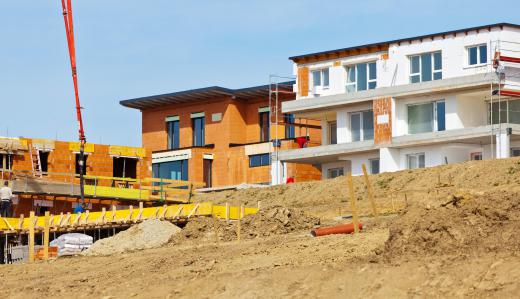There are many different types of fire resistant materials used to make clothing, construction materials, and other items. A material may be fire resistant because of an infused chemical while others are naturally fire resistant. Fire resistant materials should self-extinguish once the source of ignition is removed. Refinery workers, electricians, foundry workers, maintenance workers, and power and electric utility workers wear fire resistant clothing in the course of their daily duties. Fire resistant materials, which are designed to resist burning and withstand heat, are not the same as fire retardant materials which are designed to slow down fire or burn more slowly.
If prepared properly and manufactured with a tight weave, natural fibers like wool and cotton can be treated with fire resistant chemicals or fire inhibitors to provide effective fire resistance. Some fire blankets are made using fiberglass and are best suited for smaller household kitchen fires or a fire that starts on clothing. Nomex®, a flame resistant meta-aramid polymer related to nylon, was developed in the 1960s and is used in many types of fire resistant clothing.

Deteriorating asbestos is a mineral fiber that is very resistant to heat and fire. It was widely used in all sorts of fire resistant materials until the middle part of the 20th century. Asbestos is no longer used because it is a harmful carcinogen. Anything made from or containing asbestos should be carefully removed and disposed of according to local hazardous materials laws and regulations.
Almost 40% of fire victims are killed in their sleep by smoke inhalation or fire, so there is a demand for fire resistant building materials like drywall, paint, exterior siding, and roofing materials. There are many types of fire resistant building materials that are used on the exteriors, interiors, and roofs of houses, such as stone, brick, cast iron, steel, concrete, and even fire resistant wood products. Fire resistant materials used in construction are designed to maintain their strength, durability, and structural integrity as temperatures rise during a fire. There are even some phosphate-free, environmentally-friendly fire resistant wood products available for those who may want to use a green product.
Fire resistant building materials also include drywall in which non-combustible material and glass fibers have been fused into the core of the gypsum. This keeps the wall board from disintegrating and slows the spread of a fire. Building codes typically require some sort of fire resistant drywall in the utility and furnace rooms and attached garages of homes, and apartment and condominium building codes may require that fire resistant materials be used in ceilings and walls. There are some fire resistant brands of paint available, but most of these brands are actually fire retardant. Be sure to check if a fire resistant product carries the Underwriters Laboratories (UL) FR-S classification for surface burning characteristics of fire resistant materials.
